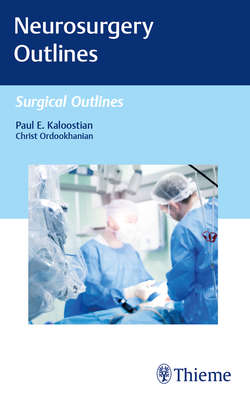Читать книгу Neurosurgery Outlines - Paul E. Kaloostian - Страница 12
На сайте Литреса книга снята с продажи.
Surgical Procedure
Оглавление1. Informed consent signed, preoperative labs normal, no Aspirin/Plavix/Coumadin/other anticoagulants for at least 12 days
2. Appropriate intubation and sedation
3. Horizontal skin incision 1 to 2 inches on either side of the spine
4. Split thin muscle underlying skin
Fig. 1.1 (a–c) A man suffered an incomplete cord injury after a vehicle crash. Radiology revealed that his cervical trauma was a C5 complete burst fracture. (Source: Diagnostic Features. In: Vialle L, ed. AOSpine Masters Series, Volume 5: Cervical Spine Trauma. 1st ed. Thieme; 2015).
5. Enter plane between sternocleidomastoid muscle and strap muscle
6. (Anterior) Enter into the plane between trachea/esophagus and carotid sheath
7. Dissect away thin fascia
8. Locate disk (preoperative imaging match/intraoperative fluoroscopy)
9. Remove disk by cutting annulus fibrosis and nucleus pulposus
10. Remove entire disk including cartilage endplates to reveal cortical bone
11. Remove ligamentous tissue front to back to allow access to spinal canal
12. Insert bone graft and implant cage into evacuated space
13. Attach small plate to front of spine with screws in each vertebral bone (see ▶Fig. 1.2 to ▶Fig. 1.4)
14. Clean surgical site, exit, and suture
15. If posterior approach is needed, place the patient prone with Mayfield head pins with all pressure points padded
16. Dissect to lamina over affected levels and confirm levels on X-ray
17. Perform laminectomy and foraminotomies over affected levels that are stenotic and place lateral mass screws with rods and bone graft if needed over affected levels for fusion
18. Obtain hemostasis, place drain, and close wound in multiple layers
